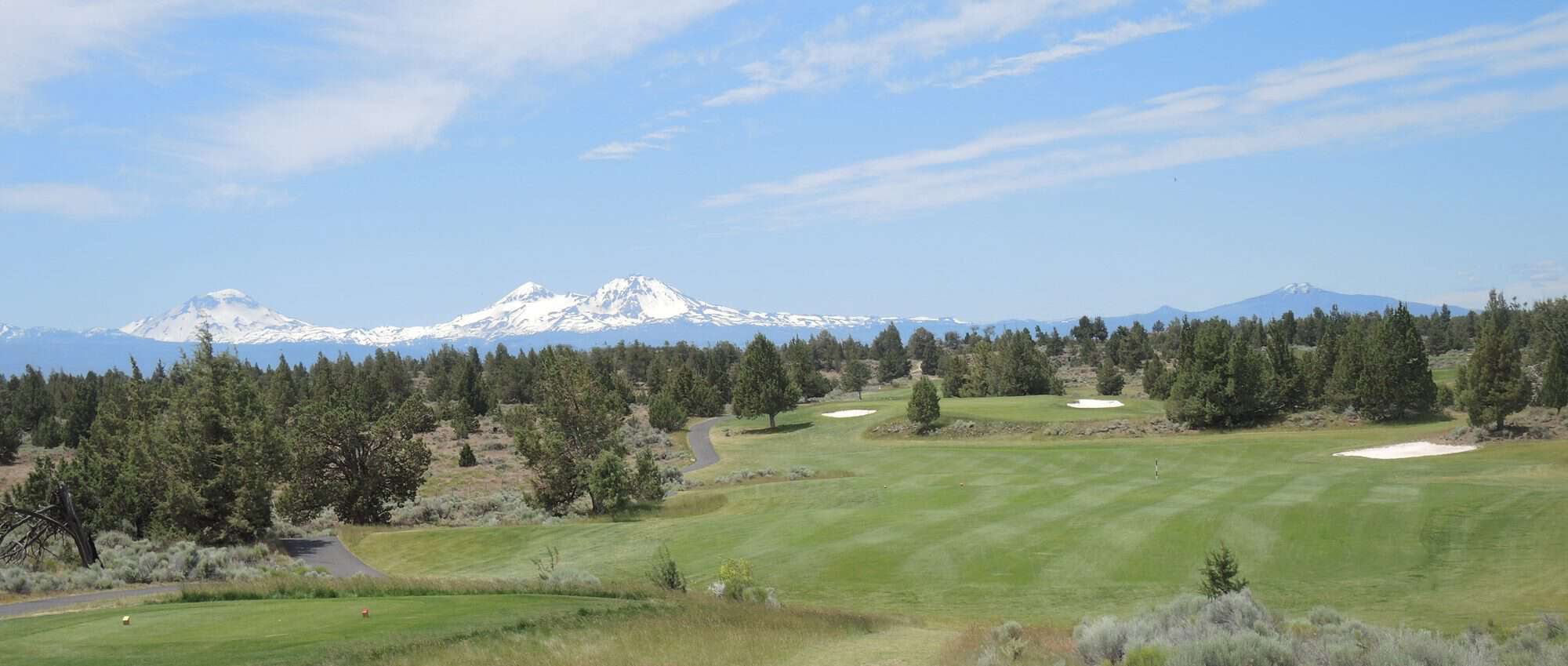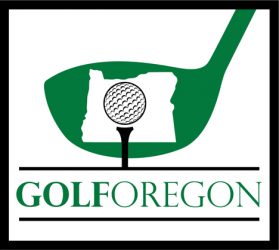In the winter, many folks in Oregon put on thermal underwear, bad weather gear, and Oregon Mudders and venture out to the course. A brave group we are.
Recently, I was playing on a course on the Oregon Coast in such an outfit with a “friend” (you’ll understand the quotation marks later). I drove my ball, it went in the air (a rarity), landed on the fairway, rolled (another rarity), and ended up on a part of the fairway that was higher because the sod rose up when water, caused by recent heavy rains, lifted the ground. If I took my normal swing, my divot would cause the mud bubble to explode. I think, “OK, winter rules,” and moved my ball so it was just off the mud bubble no nearer the hole. The spot I put the ball was probably the spot it would be in if I had marked my reference point (off the mud bubble, in the fairway, no nearer the hole), and dropped the ball (from the knees) within a club length behind the reference point.

I was about to take my next shot when my “friend” says “You are about to get a two-stroke penalty for playing your ball in the wrong place.” I look at him on this cold, wet, and windy day and think “WTF?!?” Really, it’s the off season, the course is a bit of a mess, it’s raining, and the wind is blowing. So why does he care? Oh, yes, it’s the $5.00 bet and the guy is a lawyer.
I say “Hey, this bubble is an abnormal course condition. I get relief.”
The nimrod (lowercase slang, not the hunter) responds, “Is the ball in the water? Are you standing in water? If not, too bad.”
I respond, “But if I hit the ball, I’ll be covered in water and mud.”
Because he is such a nice and forgiving guy, the nimrod says, “Read your rules. Put your ball back and hit it.”
I pull out a fiver, give it to him, say “I concede,” and go on to play the remaining holes remarkably well because I don’t have to consider my “friendly” wager.
Wanting to be right, when I get home I dig into the USGA Rules of Golf (the “Rules”) to see who was right. Being an old hacker, the first thing I notice is that the phrases “Winter Rules” and “Preferred Lies” are nowhere to be found in the Rules. Those phrases only appear in the Model Local Rules (8E-3, captioned “Preferred Lies”), which may or may not be adopted, in part or entirety, by the course through it’s “Committee” (as defined in the Rules).
To the extent I was entitled to relief, it had to be either in Rule 16.1 allowing for relief from abnormal course conditions (I’ll refer to as “ACC”), in Rule 16.3 allowing for relief from an embedded ball, or in the applicable local rules.
My first reading of Rule 16.1 makes me feel optimistic. It provides that in the general area (remember- anyplace on the course except greens, traps, and penalty areas), I get one club relief from the nearest point of relief in the general area not in the ACC, no nearer the hole. (In a bunker, I get similar relief without penalty, provided I stay in the bunker; on the green I get to go to the nearest point of complete relief under Rule 14.2. No relief in penalty areas.) This is not as good as just whacking the ball to a spot that looks good (what I usually do), but it is still pretty good relief.
I also like how broadly Rule 16.1 applies. It applies to the general area, including the rough. And it applies not only if your ball is in or touching the ACC, but also if the ACC is interfering with your stance or swing (on the green it includes ACC in your line of play). Of course, you can’t torque your normal swing to qualify under the rule, or if your ball is otherwise unplayable (like there is a tree right behind you). Rule 16.1 does not overrule unplayability not caused by the ACC.
All I have to do is show that the mud bubble fits in the definition of “abnormal course condition.” In Rule 16 and in the definition section of the Rules, ACCs are listed as animal holes, ground under repair, immovable obstructions, and temporary water. Each term has its own definition. For my exploding mound of water and mud, I don’t care about an animal hole (no animal is involved) or an immovable obstruction (because an obstruction is defined as an artificial object).

Ground under repair (or “GUR”) is generally defined as holes made by the maintenance staff, materials (like cut grass, raked leaves, or cut limbs) piled for later removal, and “[a]ny part of the course the Committee defines to be ground under repair (whether by marking it or otherwise).” My mud bubble does not seem to fit into this definition, unless the Committee (who are these people?) has deemed it so.
What about temporary water? You would think that that would fit. I mean, if I had hit the ball and took any type of divot, I would be covered in muddy water. The definition of temporary water is:
Any temporary accumulation of water on the surface of the ground (such as puddles from rain or irrigation or an overflow from a body of water) that:
- Is not in a penalty area
- Can be seen before or after the player takes a stance (without pressing down excessively with his or her feet).
It is not enough for the ground to be merely wet, muddy or soft or for the water to be momentarily visible as the player steps on the ground; an accumulation of water must remain present either before or after the stance is taken. [Emphasis added.]
I could have walked over to my ball and stood right beside it to confirm it was my ball, and, without jumping up and down, see if I could have caused the bubble to explode or water to percolate to the top of the sod. But I did not, so it does not look like my situation fits within the ACC definition. [Side note as it just snowed all over the state of Oregon: the definition of temporary water states that snow on the ground is either a loose impediment or temporary water, at the player’s option. How generous is that – just don’t go hurting the greens by walking on them in the snow.]
If my ball was embedded, I would get similar relief under Rule 16.3. But to be embedded, the ball would have to be in the general area, rest in its own pitch-mark caused by my last stroke, and part of the ball would have to be below the level of the ground. Not my ball. It actually rolled so my drive did not cause a pitch-mark.

I am therefore left with the local rules.
The Model Local Rule that directly pertains to ACC is Model Local Rule 8F. It opens with a discussion on how the Committee can provide clarity to (note I did not say expand) the definition of what an ACC is, mostly in what is covered by GUR and Immovable Obstruction. And Model Rule 8F-4 may provide me with some relief. Its stated purpose is: “When heavy rain has resulted in many areas of unusual damage to the course (such as deep ruts caused by vehicles or deep footprints caused by spectators), and it is not feasible to define them with stakes or lines, the Committee has the authority to declare such unusual damage to be ground under repair.” This seems pretty broad, and seemed to have fit my situation. The Model Rule states:
Ground under repair may include areas of unusual damage, including areas where spectators or other traffic have combined with wet conditions to alter the ground surface materially, but only when so declared by an authorized referee or member of the Committee.
The Rule seems a bit more restrictive than the purpose, but if I could find a friendly member of the Committee to declare all mud bubbles are GUR, I could get relief (and revenge in being right).
Notwithstanding Model Rule 8F and its focus on ACC, it is Model Rule 8E-3 that contains the reference to “Preferred Lies.” Here are, in part, comments to that Model Rule:
Purpose. When occasional local abnormal conditions might interfere with fair play, the affected parts of the course can be defined as ground under repair. But adverse conditions such as heavy snows, spring thaws, prolonged rains or extreme heat can sometimes damage the course or prevent use of heavy mowing equipment.
When such conditions are widespread on the course, the Committee can choose to adopt a Local Rule for “preferred lies” (also known as “winter rules”) to allow fair play or help protect the fairway. Such a Local Rule should be withdrawn as soon as conditions allow.
The use of this Local Rule outside the fairway in the general area is not recommended as it may result in a player receiving free relief from areas where a ball might otherwise be unplayable (such as in areas of bushes or trees).
And here is the Model Rule:
When a player’s ball lies in a part of the general area cut to fairway height or less [or identify a specific area such as ‘on the fairway of the 6th hole’], the player may take free relief once by placing the original ball or another ball in and playing it from this relief area:
- Reference Point: Spot of the original ball.
- Size of Relief Area Measured from Reference Point: [Specify size of relief area, such as one club-length, one scorecard length or 6 inches] from the reference point, but with these limits:
- Limits on Location of Relief Area:
- Must not be nearer the holethan the reference point, and
- Must be in the general area.
In proceeding under this Local Rule, the player must choose a spot to place the ball and use the procedures for replacing a ball under Rules 14.2b(2) and 14.2e.
This Model Rule is what the Oregon Golf Association recommends that a course use – one-club length relief only in the fairway. But the rule suggested by the Oregon Chapter of the PGA (at least for its tournaments) provides for one club-length relief in the fairway and six-inch relief in the general area that is not the fairway.
The Committee decides what local rule to follow, when it applies, and how it is applied (and also where GUR is located). But who is the Committee? Under the definitions of the Rules, it’s “The person or group in charge of the competition or the course.”
Wanting not only to know how I should have treated my situation, but also how Model Rule 8E-3 is generally applied in Oregon with so many variables, I contacted a small sample size of courses west of the Cascades. In all but one instance, the course did apply some form of Model Rule 8E-3. (The one course that did not said, “The players should decide by themselves on the first tee.” Very good advice.) But, for the other courses:
- All apply either the OGA Model Rule or the OPGA Model Rule, all with one-club length in the fairway.
- Most courses declare application of the applicable Model Rule for the duration of a period, some following the OGA non-posting period, while others declaring application of the Model Rule when the course first gets soggy. Some courses, however, review application of the Model Rule on a weekly basis, and one course reviewed application on a daily basis.
- The majority of courses do not provide information to the public on if Model Rule 8E-3 is being applied (you have to ask). For those that do, it was through a sign at the clubhouse or on the first tee.
- Who serves as “the Committee” is an interesting mix. In most cases, where there is a men’s club, the men’s club has a committee (that may or may not include the pro or supervisor) who determines the local rule that is applied and for how long. On some courses, the pro decides. In one instance the folks in the pro shop decide. And in one instance the course supervisor decides.
In my situation, I found that the course used the OGA version of the Model Rule, and that there was no declaration of GUR extending to sod-covered water bubbles. Given my impulsive nature, I did the wrong thing, because in applying applicable Model Rule 8E-3, my reference point should have been where the ball rested, not what I did (the edge of the mud bubble). By using an incorrect reference spot, I played from the wrong spot and the nimrod was right.
What I should have done was all or any of the following:
- Know the local rules and their application at that course before heading out by asking the folks at the pro shop.
- Clarify on the first tee with my playing partner what we would consider GUR or ACC for our play and what relief was available.
- Play a provisional when my golfing partner questioned what I was doing and check with the pro shop after we finished our round.
[Or, if the folks in the pro shop determine application of the rules, tip them really well before playing with the nimrod. Not a bribe, just a show of appreciation.]

Submit your review | |


